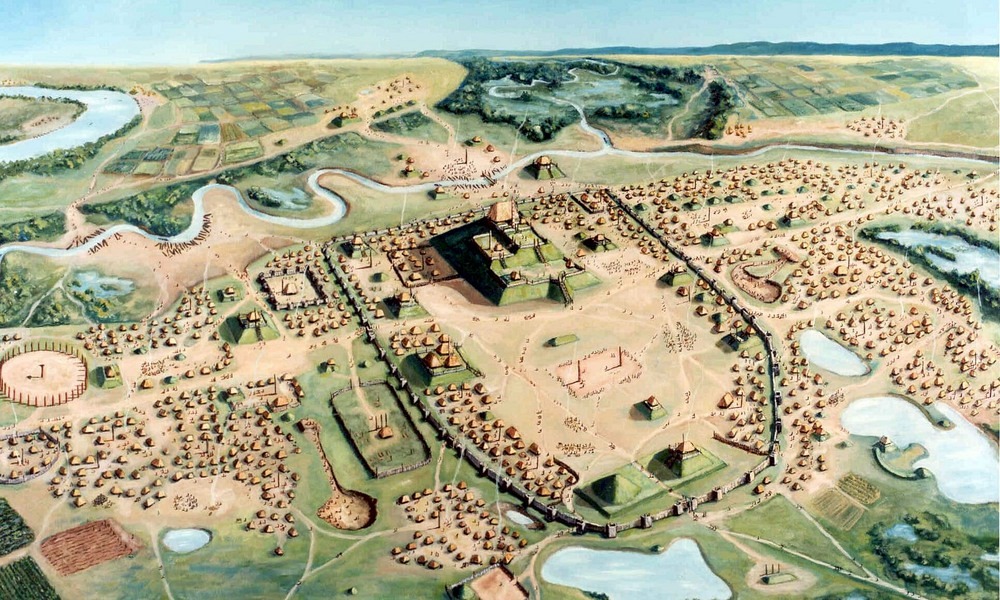A thousand years before Columbus's men would land on the shores of America, a new city was sprouting on the floodplains of modern-day St. Louis, Missouri—one that would become, within the course of just five decades, the the largest city ever built north of Mexico. The city of Cahokia, at its peak between the 10th and 12th centuries, was spread over 16 square kilometers—puny by today’s standards, but at that time it was larger than many European cities, including London. Cahokia boasted a population between 10,000 and 20,000 people and had at least 120 monumental earthen mounds that acted as foundations for many great buildings. Today, fewer than 80 mounds survive. How and why Cahokia declined remains one of America's great mysteries.

Monk’s Mound, the centerpiece of Cahokia Mounds State Historic Site. Photo credit: The Guardian
Cahokia was founded sometime around 600 CE by the Mississippians, a group of Native Americans who occupied much of the present-day south-eastern United States, from the Mississippi river to the shores of the Atlantic. These people didn’t have a written language, so we don’t know what they called themselves or their city. It was much later in the 17th century, the area was named Cahokia by the French explorers after a tribe living in the area.
Archeological finds suggest that the city was laid around a vast urban center with clearly defines zones for administrative and ceremonial functions, elite compounds, residential neighborhoods, and even suburbs, all with similar orientation on the cardinal directions. Around this were farmlands were residents grew maize, beans and gourds. At the high point of its development, Cahokia was the largest urban center north of the great Mesoamerican cities in Mexico and Central America, and was larger than any subsequent city in the United States until the 1780s, when Philadelphia's population overtook Cahokia’s historical high.

Cahokia’s most notable feature are its mounds, the largest of which is the Monks Mound standing a 100 feet tall. It is believed that the Monks Mound was the seat of governance for Cahokia, and was originally topped by a building some 100 feet long and possibly 50 feet tall. The mount building must have been back breaking work since everything—from digging up, hauling and stacking million of cubic feet of earth—was done by manual labor.
Cahokia reached its peak population in around 1100, after which the population started to decline and eventually vanished by 1350. Over-hunting, environmental degradation, climatic change, diseases and warfare may have been contributing factors, but the biggest cause of abandonment of the site was flooding.
In 2015, analysis of sediments collected from Horseshoe and Grassy Lakes, located a few miles north of Cahokia, showed signs of at least two major floods between 1100 and 1400—corresponding to the period when Cahokia’s population started to decline. In order to deposit sediments into these lakes, the Mississippi River would have had to rise 10 meters above its base elevation, enough to inundate the region’s crops and create food shortage. Eventually, the Mississippians migrated away from their city and the population assimilated with other native American tribes.
The site where Cahokia once flourished is today a National Historic Landmark and a UNESCO World Heritage Site. More than 70 mounds are scattered around this area of 2,200 acres.

Monk’s Mound. Photo credit: Steve Moses/Flickr
